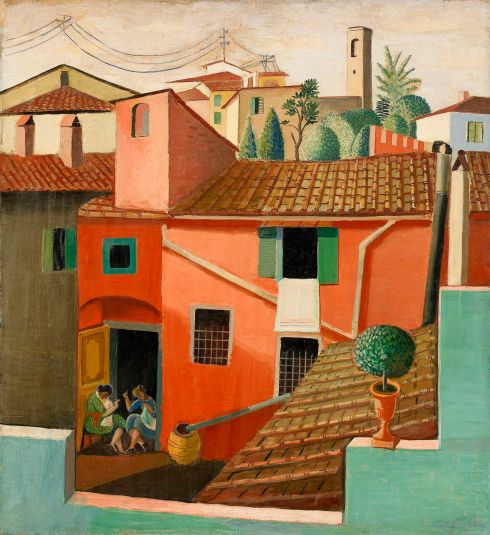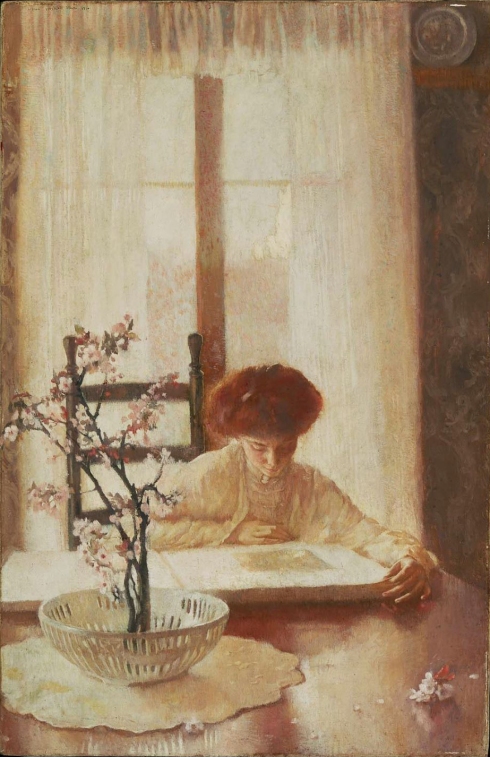“Splendid to arrive alone in a foreign country and feel the assault of difference. Here they are all along, busy with living; they don’t talk or look like me. The rhythm of their day is entirely different; I am foreign.”
(Frances Mayes, Under the Tuscan Sun: At Home in Italy)
 Leander Engström (Swedish, 1886-1927), Neighbour’s House – Settignano, Italy, 1921
Leander Engström (Swedish, 1886-1927), Neighbour’s House – Settignano, Italy, 1921
There is something about the Mediterannean nature, architecture and the whole ambience which intoxicates my soul beyond words! And this is why Engström’s painting “Neighbour’s House – Settignano” appeal to me so much these days. The first thing that attracted me about this painting is its vibrancy; the intense orange walls of the houses, the green wooden shutters, the turquoise wall of the balcony, the red roof that has soaked in all the warmth of the sun. Even the warm peachy and sandy tones in the upper part of the painting take on a certain intensity from the colour-bomb that is the lower part of the painting. Our eye goes from the lowest to the highest point in the painting, from the details closest to us to the things far off on the horizon. The painting was probably painted from some balcony and he sure had a wonderful view! A view made for daydreaming, and for capturing on canvas. A plant in a pot perched on the wall of the balcony. In the neighbour’s house bellow two women, both dressed in equally vibrant green and blue dresses, are seen sitting in front of the house’s gates, sewing something and, even though we cannot hear it, gossiping and chitchatting for sure. White cloth is hanged out to dry out of the window on the first floor. A row of terracota roofs and a few chimneys. In the distance more houses in colours of sand and cream, and a church with a tower surrounded with moody cypresses and other lush trees. I can just hear the sweet lullaby of the churchbells and imagine the birds flying by. The dance of the wind through the cypresses. A cat passing by from one roof to another. Who knows what else was going on during the time Engstrom was painting this, but the painting is static, a moment frozen in time, only awoken by our imagination it gives us more than what was painted. Settignano is an Ancient Tuscan town, near Florence, situated beautifully on the top of the hill. Engstrom loved painting vibrant landscapes in an Expressionist way, but this painting speaks more of Cubist than of Expressionist influence to me. The narrow streets, houses all clumped together with no space inbetween, roofs, church towers and cypresses; all these elements lend themselves so perfectly to a Cubist style. The shapes of things are clear and objects can be taken out and added, perfect for a Cubist eye to notice and paint. Engström lived in Florence from 1920 to 1923, studied with Matisse and lived in Paris from 1908 to 1913.

















